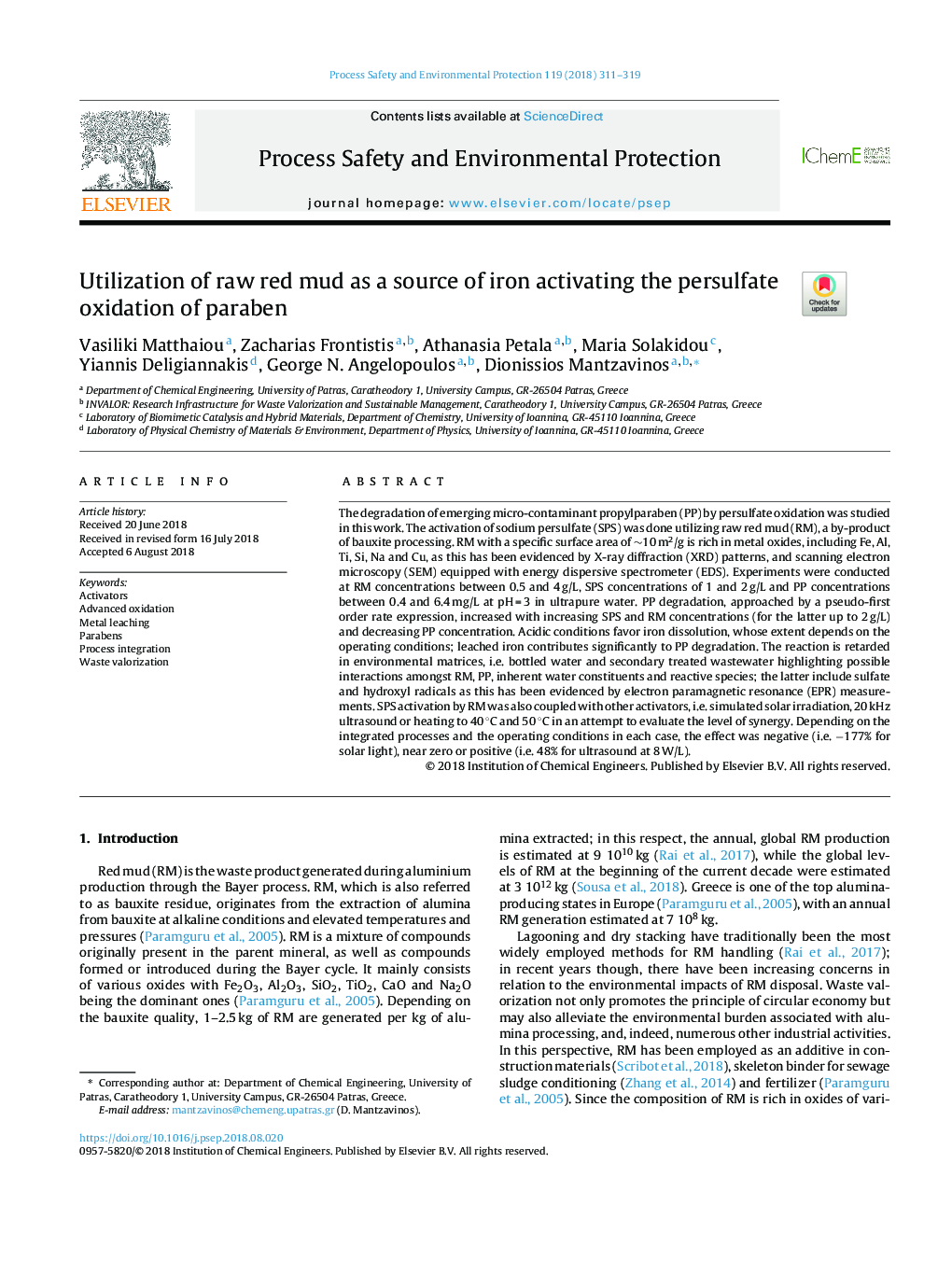| کد مقاله | کد نشریه | سال انتشار | مقاله انگلیسی | نسخه تمام متن |
|---|---|---|---|---|
| 11003070 | 1453320 | 2018 | 9 صفحه PDF | دانلود رایگان |
عنوان انگلیسی مقاله ISI
Utilization of raw red mud as a source of iron activating the persulfate oxidation of paraben
دانلود مقاله + سفارش ترجمه
دانلود مقاله ISI انگلیسی
رایگان برای ایرانیان
کلمات کلیدی
موضوعات مرتبط
مهندسی و علوم پایه
مهندسی شیمی
بهداشت و امنیت شیمی
پیش نمایش صفحه اول مقاله

چکیده انگلیسی
The degradation of emerging micro-contaminant propylparaben (PP) by persulfate oxidation was studied in this work. The activation of sodium persulfate (SPS) was done utilizing raw red mud (RM), a by-product of bauxite processing. RM with a specific surface area of â¼10âm2/g is rich in metal oxides, including Fe, Al, Ti, Si, Na and Cu, as this has been evidenced by X-ray diffraction (XRD) patterns, and scanning electron microscopy (SEM) equipped with energy dispersive spectrometer (EDS). Experiments were conducted at RM concentrations between 0.5 and 4âg/L, SPS concentrations of 1 and 2âg/L and PP concentrations between 0.4 and 6.4âmg/L at pHâ=â3 in ultrapure water. PP degradation, approached by a pseudo-first order rate expression, increased with increasing SPS and RM concentrations (for the latter up to 2âg/L) and decreasing PP concentration. Acidic conditions favor iron dissolution, whose extent depends on the operating conditions; leached iron contributes significantly to PP degradation. The reaction is retarded in environmental matrices, i.e. bottled water and secondary treated wastewater highlighting possible interactions amongst RM, PP, inherent water constituents and reactive species; the latter include sulfate and hydroxyl radicals as this has been evidenced by electron paramagnetic resonance (EPR) measurements. SPS activation by RM was also coupled with other activators, i.e. simulated solar irradiation, 20âkHz ultrasound or heating to 40â°C and 50â°C in an attempt to evaluate the level of synergy. Depending on the integrated processes and the operating conditions in each case, the effect was negative (i.e. â177% for solar light), near zero or positive (i.e. 48% for ultrasound at 8âW/L).
ناشر
Database: Elsevier - ScienceDirect (ساینس دایرکت)
Journal: Process Safety and Environmental Protection - Volume 119, October 2018, Pages 311-319
Journal: Process Safety and Environmental Protection - Volume 119, October 2018, Pages 311-319
نویسندگان
Vasiliki Matthaiou, Zacharias Frontistis, Athanasia Petala, Maria Solakidou, Yiannis Deligiannakis, George N. Angelopoulos, Dionissios Mantzavinos,